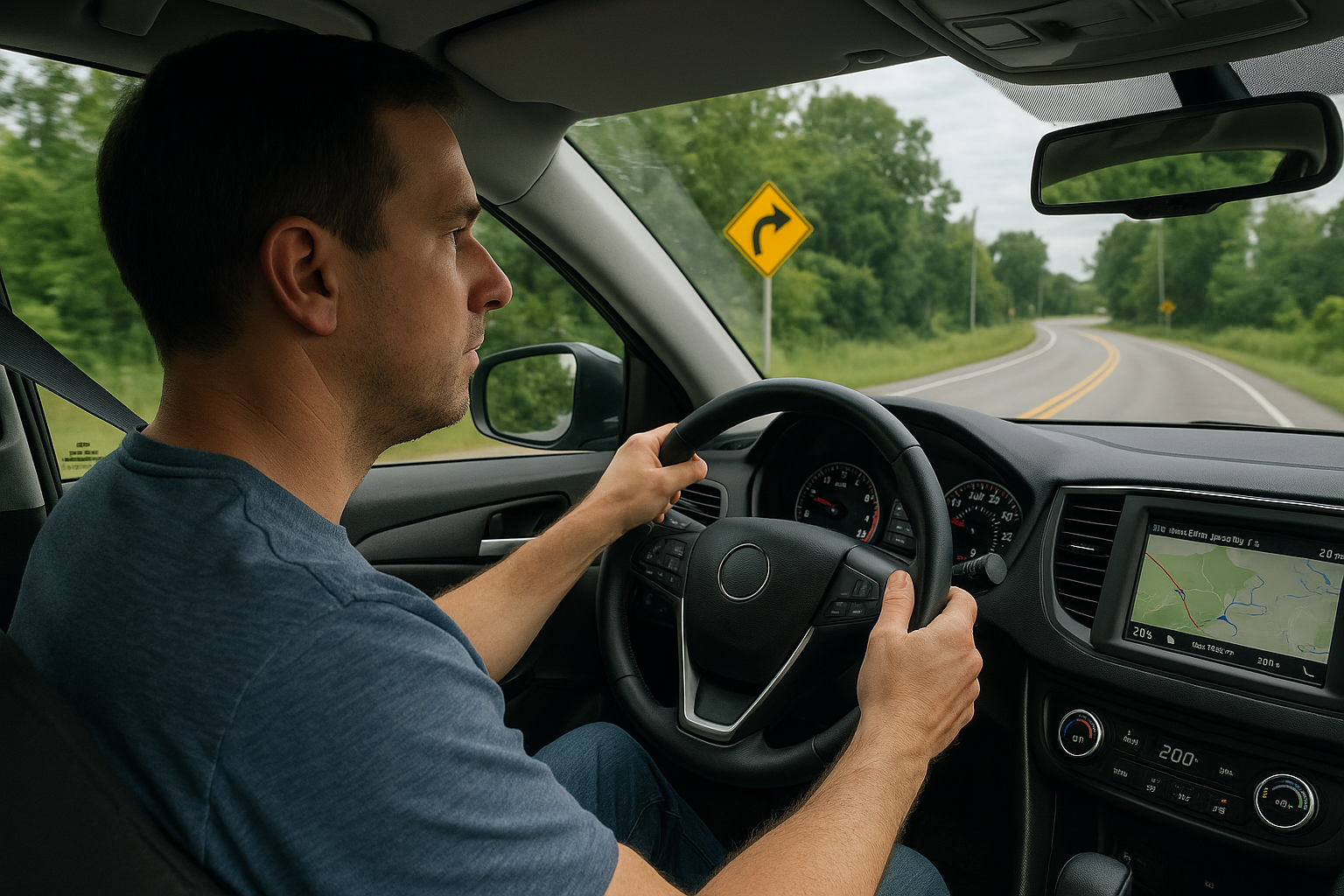Staying Safe On The Road: Practical Tips To Prevent Auto Accidents
Every time a driver gets behind the wheel, they’re taking on the crucial task of ensuring their own safety—and the safety of everyone they share the road with. Despite remarkable advances in auto safety design and traffic control, thousands of collisions still happen daily. Small changes in habits can make a world of difference. Expert guidance from a car accident lawyer Hernando County, FL, can be invaluable for those facing the aftermath of an accident. Still, the real goal is to take action before an incident ever occurs. Developing a strong foundation of good driving habits helps create safer roads and peaceful communities.
Taking preventive steps not only averts harm and loss for individuals, but also leads to greater peace of mind and lower transportation costs. Reliable research by the National Highway Traffic Safety Administration has shown that combining driver education, modern car technology, and ongoing community programs can dramatically improve road safety. These efforts don’t just save lives; they reduce stress and support a traffic environment that benefits everyone.
Everyday Driver Habits That Reduce Risk
Most motor vehicle accidents can be traced to basic choices drivers make on ordinary days. Small slips, like checking a text or forgetting to signal, add to yearly staggering accident statistics. Fortunately, embracing a few daily practices can significantly reduce your personal risk:
- Buckle up every time: Statistics are clear—seat belts cut the risk of fatal injury in half for front-seat occupants. Ensuring every passenger is properly restrained, especially children in age-appropriate seats or boosters, should become second nature.
- Drive defensively: Be aware that not every driver on the road has the same skills or focus. Anticipate mistakes by others, keep an eye on mirrors, maintain safe distances, and always look out for motorcycles, cyclists, and pedestrians.
- Minimize distractions: Anything that distracts eyes from the road or hands from the wheel—like eating, adjusting controls, or using a phone—can be a hazard. According to recent studies, even glancing at notifications can double the likelihood of a crash.
- Follow speed limits: Exceeding posted limits is a factor in over a quarter of all traffic fatalities. Driving at a reasonable speed, especially in unfamiliar or congested areas, grants the margin needed to respond to the unexpected.
Real-life stories often highlight how sticking to these habits prevents accidents and de-escalates potential dangers. Staying deliberate, calm, and observant every time you drive really does pay off.

Technology vs. Driver Awareness: The Right Balance
Today’s cars feature more automated safety components than ever before, with systems like lane-keeping assist, automatic braking, adaptive cruise control, and sophisticated sensors that alert drivers to blind spots. Recent safety data, such as the Insurance Institute for Highway Safety’s fatality statistics, confirm that these innovations are bringing down serious injuries and deaths.
Despite this technological progress, vehicle automation must be seen as an extra set of eyes, not a substitute for your own vigilance. There have been numerous instances of drivers over-trusting systems, with tragic consequences. It’s vital for drivers to remain engaged, avoid complacency, and stay ready to override automated actions when necessary.
- Regularly update car safety software and keep up with manufacturer recalls or enhancements.
- Spend time learning your vehicle’s high-tech features so you know what they can—and can’t—do.
- When in doubt, trust your instincts and stay alert. Technology can prevent many errors, but attentive, experienced humans still keep the roads safest.
Today’s drivers operate at the intersection of advanced safety systems and human awareness. Using both wisely is the surest way to stay secure.
Addressing Common Causes of Collisions
Recognizing the most frequent reasons for vehicle crashes helps drivers avoid falling into routine pitfalls. According to national reports, nearly 94% of serious accidents are attributed to human error. The following factors are major contributors and deserve attention:
- Distraction: Mobile devices, dashboard controls, eating, and even energetic passengers can take attention off the road. The risk multiplies with every second spent not looking ahead.
- Impaired driving: Alcohol and drugs—including prescription and over-the-counter medicines—reduce judgment and delay reaction. If there’s any doubt about your ability to drive, always choose alternate transport.
- Speeding and aggressive driving: Quick lane changes, following too closely, and ignoring traffic signals can transform minor mistakes into catastrophic consequences.
- Fatigue: Drowsy driving is perilous. Signs such as constant yawning, drifting between lanes, or losing focus are red flags. If tired, pulling over and resting is the best option.
- Road rage: Emotional driving clouds good decision-making. Keeping calm and refusing to engage with aggressive drivers can prevent escalations.
Addressing these risks through personal rules, as well as sharing this wisdom with loved ones and new drivers, strengthens everyone’s odds of staying safe.
How Weather Affects Road Safety
The weather can rapidly change road conditions. Adapting your driving style is critical since rain, fog, ice, and snow contribute to more than 20 percent of all crashes each year nationwide, according to government estimates. Even the most experienced drivers face increased risks in inclement weather.
- Reduce speed and increase following distance: Slippery conditions and reduced visibility mean you’ll need extra space and time to react. Sudden braking or sharp turns are much more hazardous.
- Use headlights as needed: Proper lighting isn’t just about seeing—it’s also about being seen. Use low beams in rain and fog, and make sure all bulbs are working properly.
- Heed all warnings and closures: Road signs and closures are set up to protect drivers during hazardous conditions. Take them seriously, even if it’s inconvenient.
- Maintain your vehicle: Seasonal inspections of tires, brakes, windshield wipers, and fluid levels boost readiness for bad weather.
Embracing caution and flexibility whenever the forecast shifts pays off—no trip is worth risking an accident due to rushing or underestimating conditions.
What to Do in an Emergency
Car accidents can happen to even the safest drivers. Knowing exactly what to do in the immediate aftermath improves safety, expedites help, and protects everyone’s rights if follow-up becomes necessary.
- Stay composed and check for injuries: Assess yourself, your passengers, and others involved. Move out of harm’s way if you’re able and it’s safe.
- Call for assistance: Even minor collisions should be reported so the scene is documented. First responders can offer medical help or help safely manage traffic.
- Exchange information: Obtain names, contact details, insurance, and license plate numbers from everyone involved. Take photos of vehicles, the scene, and any damage.
- Seek medical evaluation: Some injuries aren’t immediately apparent due to shock or adrenaline. When in doubt, get checked out.
- Reach out for guidance: Having legal, medical, or logistical support can ease an already stressful situation and set your recovery off on the right foot.
Never leave the scene or admit fault at the moment. Instead, allow the authorities to gather facts and file official reports. Remaining calm helps everyone involved.
Community Efforts Toward Safer Roads
Traffic safety is a shared responsibility that stretches beyond individual habits. Community-based awareness campaigns, school programs, and law enforcement initiatives—like sobriety checkpoints and seat belt campaigns—have significantly lowered accident and injury rates across various regions.
For example, participation in groups promoting better lighting, clearly marked crosswalks, and traffic-calming measures can make neighborhoods more pedestrian- and cyclist-friendly. Attending local meetings or connecting with safety advocates helps bring needed improvements and keeps policymakers accountable.
- Volunteer for or support injury prevention campaigns in your area.
- Share safety resources with others, especially new or teenage drivers.
- Stay up to date on local ordinance changes and traffic safety news.
When communities work together, the result is a culture of safety that saves lives for generations to come.




